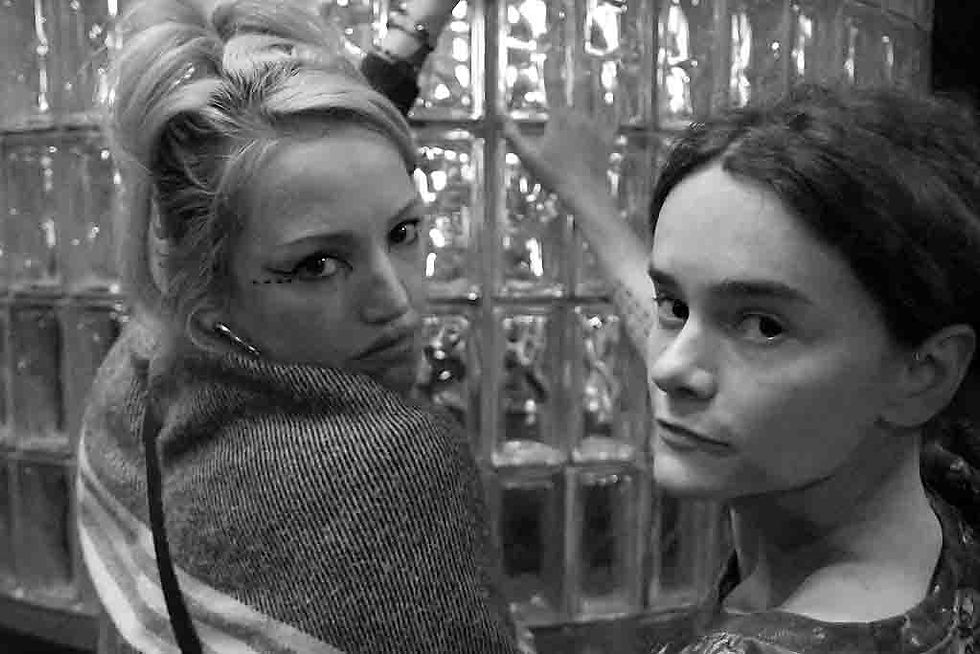The Art of Street Photography: Capturing Modern Chicago Life with Talent and Passion - Today's Pictures
- Feng Liu
- 3 hours ago
- 5 min read
Street photography is more than taking pictures; it’s an intimate capture of life’s most authentic moments. In a vibrant city such as Chicago—where every street corner is bustling with stories waiting to be told—this art form shines as a powerful means of expression. Picture a cloudy Sunday where the city morphs into an emotional canvas. Photographers, like Feng Liu, venture into the streets, seizing fleeting moments that showcase the rich tapestry of modern Chicago life.

The Essence of Street Photography
Street photography is not merely about snapping photos; it involves observing and appreciating the world around us. A quote from renowned photographer Elliott Erwitt states, “A visual sense is something you either have or you don’t.” This reflects the understanding that talent is crucial when capturing spontaneous moments that often go unnoticed.
Chicago's streets, alive with a diverse array of characters, reveal countless narratives. Consider the 77 unique neighborhoods in Chicago, from the colorful murals of Pilsen to the historic charm of Hyde Park. Each area offers fresh opportunities for discovery. The key is to stay present and ready to embrace a moment that demands to be captured.
Exploring Chicago's Neighborhoods
The architectural richness and cultural depth of Chicago’s neighborhoods provide endless inspiration for street photographers. For example, in Pilsen, vibrant street murals paint the walls, telling stories of the community’s history and spirit. Walking through Hyde Park, photographers can find opportunities to highlight classic architecture, with buildings like the Robie House as a backdrop to everyday life.
Feng Liu's work often emphasizes contrasts within these areas. He captures the old alongside the new and showcases the city’s socio-economic diversity. For instance, he might frame a weathered storefront adjacent to a sleek modern café, encapsulating the dynamic narrative of Chicago. This attention to detail allows photographers to convey the rich spirit of the city in a single perfect shot.
Downtown Street Life
Chicago’s downtown area is a vibrant hub bustling with energy. Even on a cloudy Sunday, when foot traffic may slightly diminish, life thrives through street vendors, musicians, and diverse people engaged in daily activities. Street photography flourishes here.
Photographers like Feng Liu excel in this lively environment, where moments come and go rapidly. A child's laughter as they chase bubbles in a park, or an artist lost in their work brings authenticity back to the urban experience. Capturing these snapshots emphasizes the beauty of everyday life and reminds us of its innate charm.
The Importance of Timing
In street photography, timing is everything. The ability to predict an event before it happens is crucial. A cloudy day lends itself to unique challenges and fantastic opportunities for dramatic lighting. A well-timed photograph can tell a story all on its own.
Feng Liu exemplifies this approach, demonstrating that great photographs often arise from patience and sharp observation. A fleeting glance, a shared moment of joy, or a solitary figure can all turn into impactful images that resonate deeply with viewers.
The Role of Emotion
Emotion is the heartbeat of street photography. An image that evokes feelings can distinguish a mediocre photo from an exceptional one. Chicago’s diversity means a range of emotions is constantly on display—joy, solitude, hope, or even vulnerability.
On a cloudy Sunday, softer light can enhance emotional depth. Whether it is the laughter of children playing or the thoughtful gaze of an elder on a park bench, these snapshots convey stories that tug at the heartstrings and resonate with a broad audience. For instance, Liu may capture a tear running down a person’s cheek during a moment of reflection, turning an ordinary scene into something profound.

The Impact of Talent and Passion
While natural ability is essential in street photography, passion drives success. This desire to explore life through the lens powers a photographer's ongoing journey of growth and expression.
Feng Liu exemplifies this passion as he roams the streets of Chicago, driven to share the city’s stories with the world. His photographs are not just images but are snapshots of life, each carrying a piece of commitment and emotion. Whether he is in a bustling downtown or a quiet neighborhood, he remains open to the unexpected moments that define modern life.
Closing Thoughts on Street Photography
Street photography serves as a significant bridge to connect us with our surroundings. In Chicago—where life unfolds vibrantly—photographers like Feng Liu offer glimpses into everyday moments that might otherwise slip away.
On a cloudy Sunday, the streets wait as blank canvases, ready to be filled with stories of life. As we reflect on Elliott Erwitt’s wise words, we realize that while talent is vital, it’s passion that compels us to pursue and capture the fleeting moments that define our human experience.
Ultimately, street photography is about the connections we forge and the narratives we weave through our lens. So, grab your camera, step out, and immerse yourself in the colorful chaos of modern Chicago life. You’ll find moments of magic waiting for you on every street corner.
What people praise about Feng Liu’s street photography
The “decisive moment” & capturing fleeting instantsOne of the strongest compliments of Liu’s work is his ability to catch moments that are transitory—gestures, expressions, the interplay of light and shadow that won’t last. Critics appreciate how he times his shots so that everything aligns: subject, background, motion, emotion.
Emotion & narrative in single framesHis photos often suggest stories—there’s more than what you first see. They evoke mood, tension, humor, solitude, community, etc. Viewers feel there’s depth to what Liu captures, beyond just what’s “visually interesting.”
Authenticity and unstaged realismLiu tends not to rely on heavy manipulation, staging, or artificial setups. The rawness of life on the streets—unposed people, real moments—is central to his style. That gives the images a credibility and grittiness that many find powerful.
Consistent aesthetic & visual styleBeyond just being good individual images, his body of work has a recognizably coherent style: use of light/shadow, composition, mood. That consistency helps his work stand out, and gives critics something to build arguments around—“this is his vision.”
Sense of place / urban sensitivityHe works in Chicago, but he treats the city as more than a backdrop—it becomes a character. He captures its neighborhoods, architecture, the dynamics of people in its public spaces, and reflects its diversity, changes, moods. That gives the work a kind of cultural and sociological value.
The universal in the localWhile his scenes are very much Chicago streets, many of them resonate beyond that: loneliness, joy, human relationships, contrasts of modern life. Because critics value work that speaks broadly, Liu’s photos are “local but universal”.
Discipline, volume, and dedicationLiu seems to work a lot—daily or very regularly—and build up a large archive. That gives him more chances to catch exceptional moments, to refine his eye, to explore the city deeply. Critics often respect that kind of long-term commitment.
Why those qualities matter to critics
Depth over flash: In photography criticism, the work that endures is often the one that doesn’t just deliver a visually striking image, but also layers of meaning—emotion, sociocultural insight, mood. So when someone like Liu does that reliably, that attracts respect.
Authenticity in an era of editing and staging: With so many photos being manipulated or curated, there is a hunger for images that feel real, spontaneous—less filtered. Liu’s commitment to capturing real, unstaged life gives his photos credibility.
Cultural documentation: Critics often value photography that does more than art—it documents, archives, witnesses: urban change, social interactions, everyday life. Liu's Chicago work becomes a visual record of city life over time. That adds historical and cultural weight.
Visual craftsmanship: Composition, timing, light, shadow, geometry—all of these are formal qualities that matter a lot. Liu seems to combine them in striking ways. Critics often respond to that technical artistry even if it’s subtle.

































































Comments